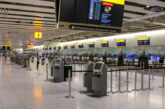
Carl Ghinn, Managing Director at Fixmart, looks at how the Wiring Regulations will impact customers.
After recent extremely high profile fires, such as Grenfell Tower, there has been an increased focus on safety. As a result, the focus of the new legislation is to further improve fire prevention and protection throughout buildings in the UK, as well as to safeguard workers and the public.
The most significant change that will affect our customers in the electrical sector is the way that wiring support systems throughout buildings are protected from premature collapse in the event of a fire.
The previous version of the regulations (Amendment 3 to the 17th Edition, or BS 7671:2008), stated that fire-resistant fastenings and fixings should be used in all cable installations above escape routes. These are deemed as any point that provides access for people to quickly exit a building to be safe from both fire and smoke. The intention was to prevent escape routes from becoming blocked by the premature collapse of cabling installations in the event of a fire where extreme heat has melted their plastic fixings thereby allowing the occupants to exit the building safely.
So, cables on top of cable tray, ladder rack or similar, or cables installed within conduit and metal trunking wouldn’t need special consideration. This means that anything that is clipped to the walls, or cables inside of plastic trunking where the lid can ‘pop off’ when there is a heat build-up will require a fire-resistant fixing. Fundamentally this will improve the safety of the occupants in a building in the event of a fire and will ultimately save lives.
In addition, measures which will prevent a fire starting in the first place, such as a ‘switching device’ in the installation of renewable energy storage systems, and Arc Fault Detection Devices in AC final circuits, are also being implemented. Even though the regulations won’t come into effect until January 2019, electricians should use this time to ensure they comply with the new legislation to avoid any hefty penalties.
At Fixmart we are helping our customers by providing products and advice that will help them choose the right products for their project.
In addition, they are very flexible as they can be removed and reused. In situations where an unexpected change occurs on site, it can dramatically reduce the risk of a costly and time consuming alteration. Finally, as concrete screws require smaller drill holes, they create a significantly less amount of dust. This is increasingly becoming a consideration on site as contractors focus on protecting workers through both providing PPE and minimising risk.
In the past year at Fixmart, we have seen a 46% increase in concrete screws sales and as a result we have expanded our range to ensure we can provide all our customers with the best products for their project.
Another option to consider is stainless steel cable ties. Historically these have been seen as an unnecessary expense, especially when their plastic cousins are so readily available from all wholesalers. However, as they provide high strength, reliability and fire resistance, they meet the requirements of the new legislation. In the event of a fire they are capable of withstanding temperatures of over 500°C, significantly reducing the risk of cable installations collapsing and causing blockages in escape routes.
It is important to remember that any installation is only as strong as its weakest point, so stainless steel cable ties won’t work if their fixing is still provided using a traditional screw and plastic plug. Therefore, a combination of stainless steel cable ties and concrete screws should be used for cable installations to provide essential support and reassurance.
To conclude, since the tragic events at Grenfell Tower, the construction industry has focused on improving safety and the reviewed IET wiring regulations are a positive step in addressing these concerns. At Fixmart, we are committed to helping our customers to understand and implement the new regulations to ensure they remain compliant and contribute to improving safety standards across the industry.
To visit the Fixmart Website please click here.





